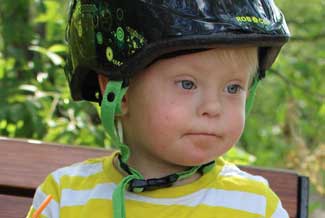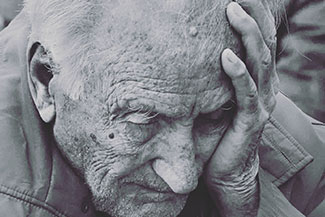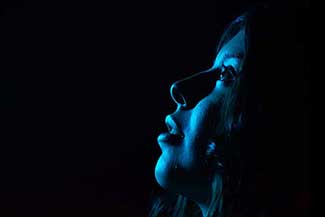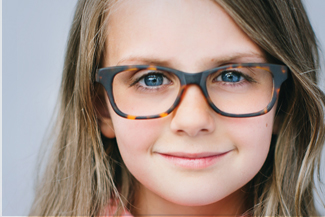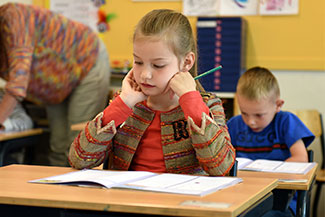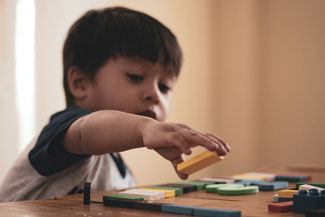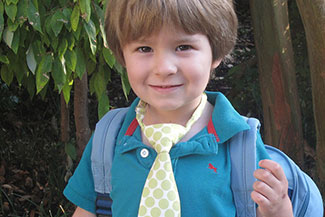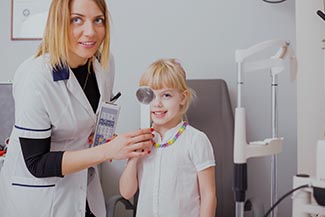Vision Therapy In Houston
Over 25% of School Aged Children Have Visual Issues that Affect Learning
Houston's Vision Therapy Center
Vision Therapy is a series of activities designed to give patients necessary and meaningful experiences to improve vision.These activities teach the brain and the eyes to work together more effectively. Our Optometrist, Dr. Lisa Roach has extensive experience providing vision therapy for children, with incredible results.
CHILDREN, LEARNING DISORDERS, & VISION
Vision issues can cause significant behavioral and learning challenges for children. Often, these challenges manifest in ways that are often confused with
- Dyslexia,
- ADD,
- ADHD,
- Reading problems, and
- Poor focus.
This can result in misdiagnosis. If children exhibiting these symptoms receive a negative diagnosis, this leave teachers and parents feeling helpless and uncertain. If you are concerned about your student or child, schedule a developmental eye exam with our optometrist and Vision Therapy doctor today!
Vision Is More Than 20/20
While eyeglasses and contact lenses are effective treatments for refractive errors like nearsightedness, farsightedness, astigmatism, and presbyopia, there are other vision conditions which corrective lenses cannot fix.
Vision therapy, often referred to as “physical therapy for the eyes and brain,” is a treatment program that consists of a series of “eye exercises” or activities that are prescribed and monitored by a trained optometrist, and are used to retrain the visual system to function more efficiently. The therapy program is customized towards the visual needs of each patient, and is adjusted throughout the process to encourage further visual improvements. The human brain is remarkable in its ability to adapt to new information with remarkable speed and success. This is known as neuroplasticity, and is the guiding concept behind vision therapy’s success.
Vision is all about the way our brains and eyes interact. Whether it’s reading words on the board, catching a ball, or tying our shoelaces, we depend on our visual system to work properly in order to succeed at any of these tasks.
This is because vision isn’t just what we see, it’s how we interpret and interact with that information. In fact, you can have perfect visual acuity―able to rattle off all the symbols on the reading chart―but still struggle with dyslexia, poor focus, hand-eye coordination, or vision conditions like strabismus, amblyopia, or convergence insufficiency.
Vision Therapy helps patients improve their foundation for reading, learning and playing sports. It’s a series of custom and individualized activities and exercises which function as a form of neuro-optometric rehabilitation.
In other words, Vision Therapy retrains the brain to more effectively interact with the eyes and therefore improve vision functioning. The goal is to enhance eye tracking, focusing and eye teaming abilities as well as eye-hand coordination and visual processing speed.
The program is not only for children. Vision Therapy is effective for adults, especially if they are motivated to improve their visual abilities.
Healthy people with good visual acuity can still suffer from vision problems that affect their quality of life. Vision therapy has shown to be an effective method of treatment for patients of all ages and for many conditions that affect the visual system, including but not limited to:
- Oculomotor dysfunction (eye movement disorders)
- Accommodative disorders (eye focusing disorders)
- Non-strabismic binocular disorders (eye teaming disorders)
- Strabismus (crossed eyes)
- Amblyopia (lazy eye)
- Visual sequelae of acquired brain injury (stroke or concussion)
- Visual information processing disorders
These vision problems are treatable, and are often overlooked at visual screenings. At Eye Trends Houston, we help people overcome these challenges by addressing the underlying vision problem.
Effective therapy requires visual skills to be developed until they are integrated with other systems and become automatic, enabling patients to achieve their full potential. The length of treatment varies between patients depending on the complexity of their condition and the specific needs of the patient. This may take as little as 10 sessions, or it may take longer.
Vision therapy results can vary depending on each condition and circumstance. Successful vision therapy requires active engagement from the prescribing doctor, vision therapist, patient, and parents of any children enrolled in the program. With time, consistency, and hard work, patients can experience significant improvements in symptoms and efficiency in school or work-related tasks. Many school-aged patients often report increased reading speed, reading comprehension, and performance in school overall.
If you can't make sense of what you're seeing, sitting in school is pure torture. Vision problems are a barrier to focus and therefore result in poor behavior and school performance. Very often, a diagnosis of ADD or ADHD is compounded by underlying vision problems. Sometimes, the diagnosis itself is in error and the behaviors and learning challenges are solely due to these visual conditions.
By addressing the underlying cognitive visual problems, Vision Therapy helps address the underlying causes of hyperactivity and concentration problems. The result is improved behavior, focus, and life achievement.
A meta study based on data of 75,000 children shows that children with visual problems that cannot be corrected by glasses or contact lenses, have double the rate of ADHD.
What is Amblyopia?
Amblyopia, commonly referred to as “lazy eye” is when there is a significant difference in power between the eyes. This is often, but not always, caused by an alignment or eye-teaming problem such as strabismus.
Some common symptoms and problems associated with lazy eye:
- Poor depth perception
- Head tilting
- Social stigma
- Slow reading*
*According to a study published on November 2015 by the Journal of the American Association for Pediatric Ophthalmology and Strabismus, children with amblyopia read slower 42 words per minute than children without amblyopia that read 81 words per minute.
Treatment for Amblyopia: It’s Not about the “Bad” Eye
Amblyopia or “lazy eye” is best treated by Vision Therapy.
First, the source of the amblyopia must be identified. When indicated, eyeglasses are prescribed. Many eye doctors, particularly Pediatric Ophthalmologists, begin treatment by patching the "bad" eye. However, numerous studies have indicated that patching has been proven to be ineffective! Likewise, some doctors recommend atropine eye drops. However, atropine eye drops merely address the symptoms and not the neuro-optometric cause itself.
The common approach treats the problem as a problem in that one eye. Treating one eye may improve the acuity (being able to see letters on a chart) for a while, but often reverts and regresses.
The developmental approach taken by Vision Therapists realizes that amblyopia is really not an eye problem, but rather a problem of not being able to use the two eyes together as a team (eye-teaming). This approach is therefore often much more successful. In the same way that it was difficult for a parent to identify if someone had the problem, to begin with, it is often difficult for them to know if an eye doctor's recommendation to patch the eye is really working. They, therefore, may be losing time with an ineffective and outdated treatment plan.
Amblyopia does not go away on its own, and it can significantly affect a child’s ability to both learn and thrive socially in school. Untreated amblyopia can lead to permanent visual problems and poor depth perception. To prevent this and to give your child the best vision possible, amblyopia should be treated early by vision therapy.
At What Age Can Vision Therapy Treat Amblyopia?
An old axiom that is still held by many eye doctors is that amblyopia must be detected and aggressively treated before the age of 8 or 9. In reality, treatment for amblyopia or lazy eye is effective for adults as well as children. A child’s visual system is more malleable at a younger age, making treatment quicker at a younger age. However, adults with amblyopia or “lazy eye” tend to be more motivated patients. Improved eye teaming is nearly always achievable.
This near-vision problem is the leading cause of eyestrain, blurry vision, and double vision. Research demonstrates that the traditional focus exercise often called "pencil pushups" are ineffective. The only consistently effective treatment for convergence insufficiency is office based Vision Therapy.
What is Convergence Insufficiency?
Convergence Insufficiency is a neuro-visual condition where the eyes fail to come together (to converge) enough to enable proper visual perception. The condition is particularly related to near-vision or near-center and visually demanding activities. This can result in:
- Poor school performance and behavioral problems
- Eyestrain
- Blurred vision
- Diplopia (double-vision)
- Asthenopia (eye strain and fatigue)
- Difficulty making eye contact
- Fatigue
- Headaches and migraines
- Difficulty reading and concentrating
- Avoidance of “near” work
- Poor sports performance
- Dizziness or motion sickness
A study of almost 700 5th and 6th graders indicated that convergence insufficiency is much more common than many assumed with 13% of students having convergence insufficiency, as well as demonstrating that of the children who showed three signs of convergence insufficiency, 79% were classified as being accommodative insufficient as well.
Treatment for Convergence Insufficiency
Eye coordination problems such as convergence insufficiency and convergence excess generally cannot be improved with eyeglasses or surgery. Likewise, research demonstrates that the traditional focus exercise often called "pencil pushups" are ineffective. The only consistently effective treatment for convergence insufficiency is office-based Vision Therapy, which will improve eye coordination abilities and reduce symptoms and discomfort when doing close work.
Learning is highly visual. When vision conditions disrupt the way we perceive and interpret information, a child's learning is compromised. Perceptual challenges in vision such as dyslexia, amblyopia, and convergence insufficiency can be effectively addressed through Vision Therapy. The regimen of technologically aided activities of work to significantly improve the accuracy and skill with which a child perceives and interprets visual information.
As a result of Vision Therapy in Houston, your child's vision problems are addressed, learning becomes much easier. This means improved ability to focus, learn, and excel, socially as well as academically.
Special needs such as autism, cerebral palsy, down syndrome, and other conditions often mean a child struggles with hand-eye-coordination. Children with these challenges, or anything else requiring occupational therapy, is very likely to gain immensely from Vision Therapy. A regimen of customized focus and perception exercises will improve depth perception and fine motor skills.
- 45% of patients with down syndrome have strabismus/cross eye
- As many as 40% of autistic people have strabismus/cross eye
- Estimates of the incidence of strabismus in children with cerebral palsy go as high as 88%, Vision Therapy has shown to be effective for children with cerebral palsy.
What is Strabismus?
Strabismus, often referred to as “Crossed Eyes”, “Wandering Eyes”, or “Wall Eye” is a condition where the eyes fail to align properly. Beyond the social stigma, strabismus often results in other vision and visual processing problems such as diplopia (double-vision), amblyopia, and problems with depth perception. A major concern for developmental optometrists is that strabismus is not as simple to diagnose as a visual check. In fact, you can have strabismus without any obvious crossing or eye turn.
There are four kinds of strabismus, two horizontal and two vertical:
- Esotropia: one eye may turn in relative to the other
- Exotropia: one eye turns out relative to the other
- Hypertropia: one eye turns up relative to the other
- Hypotropia: one eye turns up relative to the other
Treatment for Strabismus
All too often, parents are told not to worry about their child's Strabismus symptoms and that their child will 'grow out of it'. This is a mistake. In many cases, the symptoms of the problem do not improve as the child grows, and meanwhile, strabismus causes significant difficulties with reading and learning. Treatment varies depending on the cause of the eye-turning, and may include:
- Eyeglasses
- Vision Therapy
- Prism
- Eye muscle surgery
Eye muscle surgery can sometimes make the eyes appear to others as if it is straight, but it rarely aligns with the other eye, and, despite undergoing the symptoms associated with Strabismus continue. A program of Vision Therapy for children or adults is usually required in order to restore visual function and the ability to properly use the two eyes together as a team.
Over 80% of learning is visual: 3 in 4 children with reading disabilities are affected by visual dysfunction.
If you can't make sense of what you're seeing, sitting in school is pure torture. Vision problems are a barrier to focus and therefore result in poor behavior and school performance. Very often, a diagnosis of ADD or ADHD is compounded by underlying vision problems. Sometimes, the diagnosis itself is in error and the behaviors and learning challenges are solely due to these visual conditions.
Most people are familiar with vision problems that eyeglasses address; nearsightedness, farsightedness and astigmatism. These are called refractive conditions.
A learning-related visual problem directly affects how we learn, read, or sustain close work. Because difficulties with reading and learning affect the child's ability to focus, vision related learning problems are often misdiagnosed as ADHD or other behavioural issues.
Visual problems in any of the following areas can have a significant impact on learning:
- eye tracking skills - eyes following a line of print
- eye teaming skills - two eyes working together as a synchronized team
- binocular vision - simultaneously blending the images from both eyes into one image
- accommodation - eye focusing
- visual-motor integration - eye-hand coordination
- visual perception - visual memory, visual form perception, and visualization
Vision and learning are intimately connected. Someone may have a learning problem that is caused by an underlying vision problem. A child with a vision problem can be misdiagnosed as having Learning Disabilities, ADHD, or Dyslexia. There are various reasons for this misdiagnosis. For example, children who have learning-related visual problems cannot sustain their close work at school or home and often show signs of Inattention or Hyperactivity. A child may be misdiagnosed with ADD or ADHD because children with ADHD also can't sustain attention on their work, and inattention and hyperactivity are the two of the three main symptoms for the diagnosis. Same behaviors with vastly different diagnoses.
It is common for children who have Learning Disabilities to have vision problems that contribute to these learning problems. Vision Therapy does not correct learning disabilities, but correcting the underlying vision problems through Vision Therapy often solves many of the obstacles that make learning more difficult than it need be. Call our Vision Therapy Clinic in Houston for more information.
By addressing the underlying cognitive visual problems, Vision Therapy helps address the underlying causes of hyperactivity and concentration problems. The result is improved behavior, focus, and life achievement.
A meta study based on data of 75,000 children shows that children with visual problems that cannot be corrected by glasses or contact lenses, have double the rate of ADHD.
There is no consensus on the official definition of dyslexia. Often referred to as a “learning disorder”, dyslexia is typified with difficulty reading or interpreting symbols in the correct order or syntax despite the fact that the person with dyslexia has, at least, average intelligence. "Dys" means "not". "Lex" means "read". Dyslexia, therefore, literally means not being able to read.
A substantial number of individuals with dyslexia actually have other visual problems that make the problem greater. All too often, an undiagnosed vision problem is the reason the individual was diagnosed as having Dyslexia in the first place. If a vision problem affects learning, it can sometimes be misidentified as dyslexia because there are striking similarities between the two.
Vision Therapy Treatment For Dyslexia
Behavioral and Developmental Optometrists at the The Low Vision Center At Eye Trends in Houston, Texas have the knowledge and experience to diagnose and treat vision disorders that masquerade as Dyslexia or contribute to the unique challenges presented by Dyslexia. However, Vision Therapy does not treat Dyslexia itself.
Attention Deficit Disorder (ADD) is a widespread problem. If a child has a short attention span, the common assumption is that the child has ADD and should be on medication. If a child has behavior problems, then the assumption is that they have ADHD, Attention Deficit Hyperactivity Disorder.
At times, an underlying vision problem further complicates matters. Addressing the vision problems reduces the symptoms of ADD and sometimes eliminates them entirely.
If a child has difficulty pointing their eyes in to read material (convergence), if they can’t physically focus (as you would focus a camera), or if they can’t sustain those activities, that then makes it all the more difficult for the individual to maintain sustained attention. More energy is needed for the visual system and there is then less energy to concentrate on reading. This then leads to a short attention span. If someone can’t physically maintain concentrating for whatever reason, they may be then labeled ADD.
A child who cannot focus because of a vision problem will not be able to sit still and do as instructed. Furthermore, a child with these kinds of vision problems is not able to direct their eyes and focus within the amount of time allotted to complete assigned tasks and homework. In this case, medication will not be effective. As the child develops the visual ability to correctly physically focus their eyes, they are better able to attend and concentrate, maintaining their mental focus for longer periods. They are then able to complete their work.
Before a diagnosis of ADD/ADHD is made, (or even once it has been made) and medications prescribed, parents and teachers should first consider a comprehensive eye examination with our developmental optometrists for their children. Much is at stake in the event of a misdiagnosis.
For more information on ADD and the connection with Convergence Insufficiency please see https://www.ncbi.nlm.nih.gov/pubmed/16361187
60% of learning disabled students failed two or more binocular vision tests according to research by the Waterloo School of Optometry. The study was performed on students who had never received an eye exam and did not wear glasses or contacts. The research confirmed that children with learning disabilities, especially reading related learning disabilities have an extremely strong chance of having binocular issues (problems with the eye working together).
According to research performed by The AAO 32% of university students had Binocular Vision Issues. The conclusion of this study is:
"Because these dysfunctions have a negative effect on performance, appropriate vision evaluation for this population is extremely important. In this study 31% of the students needed Vision Therapy for symptoms such as eye strain, double vision and headaches.
Vision problems are very common in individuals with developmental disabilities such as autism. These problems or stims include:
- lack of eye contact
- staring at spinning objects or light
- fleeting peripheral glances
- side viewing
- difficulty at maintaining visual attention
People with autism and other developmental disabilities often have trouble efficiently and accurately processing visual information, often combined with difficulty coordinating between peripheral and central vision. Following an object (eye-tracking) is also a typical problem. There is usually a preference to scan or glance at objects from the side instead of looking at it straight on. Eye movement disorders and crossed eyes are common in the autistic spectrum.
Vision Therapy is effective at in stimulating and improving proper visual responses, eye movements, and the central visual system. Vision Therapy is also effective in helping patients to better organize visual space and gain peripheral stability so that he or she can better attend to and appreciate central vision and gain more efficient eye coordination and visual information processing. Dr. is certified as a Fellow of the College of Optometrists in Vision Development (COVD) and is experienced in examining and treating individuals with developmental disabilities and autism, even those who are non-verbal.
Patients with Down Syndrome overwhelmingly require eye care, with 70% requiring glasses and 45% of people with down syndrome have strabismus, which is usually best treated by a Vision Therapy Optometrist. Furthermore, there are a variety of ocular diseases associated with Down Syndrome patients such as tear duct abnormalities that can lead to severe discomfort, keratoconus (misshapen cornea) and congenital cataracts. A patient with down syndrome will also require specialized glasses made for their unique facial features.
Patients with Cerebral Palsy will most likely have visual conditions that require correction with glasses and in many cases Vision Therapy. Recent research on Vision Therapy for Cerebral Palsy is showing that it is extremely effective. Many patients with Cerebral Palsy will have Strabismus, or, “crossed eyes”, which is most effectively treated with a Vision Therapy program that is personalized to the patient.
A visual experiment where 4 teachers experience common vision issues.
This video is more comprehensive and goes into a lot more detail about the visual process:
Here is another great video which explains what 3D movies can tell you about your vision:
How Else Can Vision Therapy Help?
Neuro-Optometric Rehabilitation at our vision therapy center serving Houston,Spring,Woodlands,Conroe treats patients with a specialized Vision Therapy program for those who have suffered a brain injury, that effectively treats visual problems including:
- Diplopia (double vision)
- Eye-tracking problems
- Binocular Vision Dysfunctions (the ability to coordinate the two eyes to work together)
- Reduced visual acuity at far (how clear the letters are at distance)
- Reduced visual acuity at near (how clear the letters are at reading distance)
- Accommodative Disorders (physically focusing the eyes)
- Difficulties in visual perception (are objects where I think they are?)
- Visual Field loss (not being able to see on the right side of the right eye, for example)
- Deficits in visual motor (eye movement problems)
- Ocular Motility disorders integration (putting together eye movement with body movement)
- Visual Information Processing (making sense of what you see)
- Strabismus (eye turns)
- Mental visual focus
- Physical eye focus
A brain injury such as a concussion will often disrupt the visual process that interfere with how information is taken in and processed. Vision can be also be compromised as a result of a neurological disorder such as a stroke, a brain tumor or Multiple Sclerosis. These are termed Acquired Brain Injuries.
When someone has a Traumatic Brain Injury (for example a car crash or a bad fall) or an Acquired Brain Injury (stroke or brain tumor), it is common to then develop problems associated with vision. Making sense of what you see is one of the most basic and important brain functions. Your Houston Neuro-Optometrists help individuals solve the vision problems brought about by that brain injury. Addressing the vision problem often facilitates improvement with other therapies. Neuro-Optometrists diagnose and treat the vision problems in order to maximize the patient's outcome, with the ultimate goal of these services to improve the patient's quality of life.
2020 eyesight and good hand-eye coordination are not enough to maintain peak performance for sports. We tend to underestimate the complexity and challenge posed to our visual system when we try to hit a ball moving at 65-80 miles per hour. Sports Vision Training uses the principals of vision therapy in research-backed therapy that improves sports performance through improving skills such as:
- Better hand-eye coordination
- Improved depth perception and estimation
- Faster reaction times
- Vision and balance
- Precise eye movement and tracking
Our developmental optometrist, provides cutting-edge sports vision training to athletes from the greater Houston area.
No. There is no age limit because of the brain’s neuroplasticity. Our brains are dynamic and flexible. Just like a muscle or playing an instrument, the more we practice and hone our ability and memory, the more skillful we become. Children's brains are more malleable than adults, and for this reason, it is assumed that children will have better results with Vision Therapy. While true, adults possess a strong motivation to make the treatment plan a success, and we successfully treat patients of all ages.
Teachers, parents, and adults should learn to be on the lookout for the symptoms listed below as they may indicate a vision issue.
- Lazy Eye, cross eye, double vision
- Difficulty Reading
- Poor Classroom Performance
- Difficulty staying focused
- Strabismus
- Poor hand-eye coordination
- Constant squinting/head tilting
- Uses fingers to read
- Favors one eye over the other
- Poor handwriting
- Difficulties with geometric shapes
- Headaches after reading or computer work
- Feeling of fatigue after reading or using the computer
One of the questions our optometrist receives from perspective patients is “does vision therapy work?”
We have compiled a short list of resources for you to help you understand the scientific basis for vision therapy and its effectiveness.
Summary Of Research On Reading Disabilities and Vision Therapy
Research On Convergence Insufficiency and ADHD
Our Vision Therapy practice is located in The Woodlands, TX providing advanced visual therapy for the greater Houston area.



